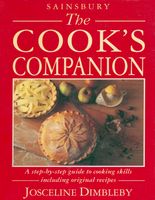Advertisement
Lamb
Appears in
Published 1991
Lamb is my favourite meat. Living in the Middle East as a young child, it was the only meat I knew, and I still love cooking it with coriander, cumin, yogurt, mint and even dried fruit – all accompaniments to lamb which I became used to at the time.
Lamb is sold when it is under one year old; pale pink flesh indicates young lamb, and the flesh darkens to light red as its age increases. As a general rule, the younger the lamb, the more tender it is. The best lamb easily available is usually spring lamb of under six months old; preferably its flesh should still be pale and its fat creamy white, never yellow. A blue tinge in the knuckle and rib bones also indicates a young animal. Flavour, however, develops with age; mutton (sheep over two years old) can have a wonderful gamy flavour, but needs slow cooking to make it tender. It is difficult to obtain nowadays but if you ever come across any mutton, try it. To me, young lamb is most delicious when it is cooked slightly rare, pink rather than actually bloody. I think an expensive leg of lamb is wasted if it is overcooked but a larger shoulder can have great appeal when it is spiced, garlicked and roasted very gently. Shoulders have, in fact, a sweeter flesh than the leg. If you can’t face the more difficult task of carving a shoulder you can have it boned and rolled. Boning takes away a little of the flavour but you can make up for this by stuffing the joint.

